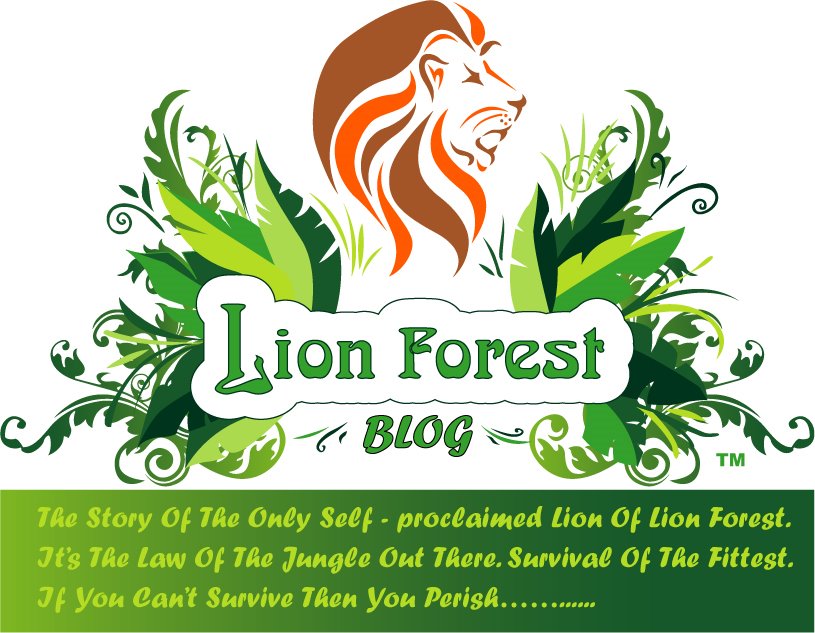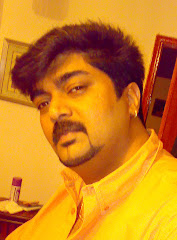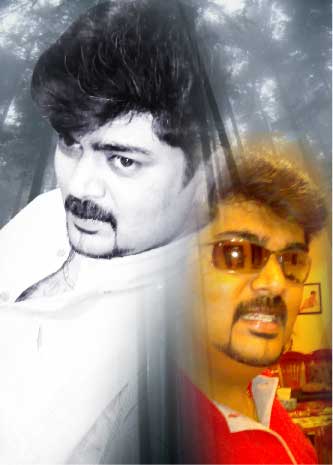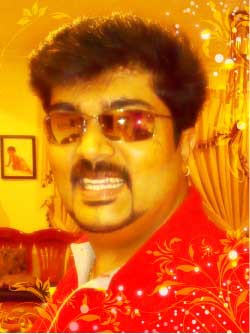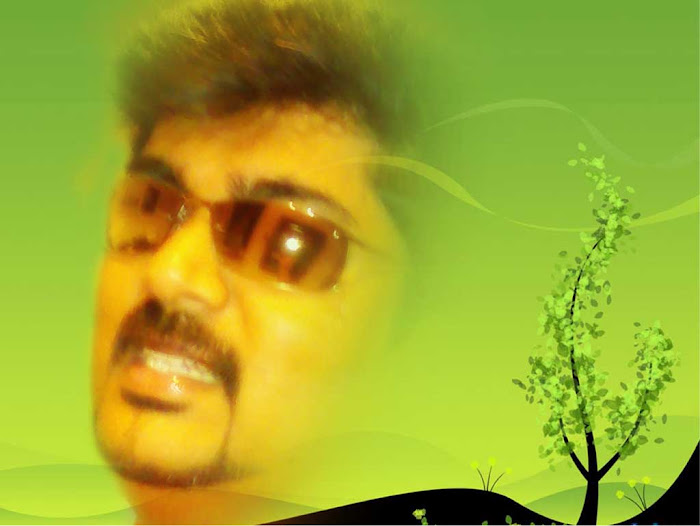I Lost
Still haven't decided what to write but come back later as I'm sure to write.......Right now all I can say is Love is killing me slowly & it hurts.

About Me

- LION FOREST
- Chingavanam ,Kottayam, Kerala, India., Kuwait
- Confused Living describes me best. We are all toys in the hands of fate. But the logo signify my Majestic, Secure, Strong, Dominating self. Perfect significations for a corporate symbol, aren't they? Am I one of those? Probably secure, not so much the rest. But the animal's figure is closely anchored to my life. I am proud of both the logo and the name as the founder is originally me, I know what it stands for and therein lies the ‘tail’ of Whats In A Name!I’m from a town called Chingavanam in Kerala which is supposed to be God's Own Country. Brief about Chingavanam the ”Lion Forest” of Kerala. Chingavanam is located in Nattakom panchayat, Kottayam District. It is the biggest town in Nattakom panchayat which is the largest panchayat in kerala. Just 8 KM from Kottayam town & 8.5 KM Distance from Changanachery Town, it is away from the hustle & bustle of the cities. The place is about 8.5 km from Changanacherry on the Adoor -Kottayam MC Road. Legend has it that the name Chingavanam is derived from “Simhavanam”. Hence the name “LION FOREST”.It is near to Kurichi. Kurichi is 2.5 KM from Chingavanam- The Lion Forest of God's Own Country.
Thursday, February 28, 2008
Monday, February 25, 2008
Buffalo Hunter - Wild Idea
Murrah Buffalo- Many aspects, One animal
Sorry I haven't been able to post anything the past couple of days, but they have been long and draining. I’m never short of enemies in my life but in the last few days I was having a different kind of enemy and war broke out. My PC is one of the things in life that keeps me going and it was attacked left and right. I was having a war with all the viruses and spy wares on my PC. The stuffs like info stealers and blackmail viruses were like 40 to 50 of them. Why would anyone want to steal my info as there is nothing in my CPU and I got everything in my head? Anyway I succeeded in killing them all.
 Now I’m again back in track. Ok now let me tell you about me being called an Idea Factory. My mother told me that I was not born at home but in an Idea Factory. In fact I even made logos on that. It’s wild Ideas anyway. Here goes one of them.
Now I’m again back in track. Ok now let me tell you about me being called an Idea Factory. My mother told me that I was not born at home but in an Idea Factory. In fact I even made logos on that. It’s wild Ideas anyway. Here goes one of them. We have heard about the recent shortage of diary milk and milk products in Kerala and the problems with ‘MILMA’ company which prompted me to write today about this so that the government of Kerala can learn a few things from IRAN - a country kept aloof from the world but still surviving and working hard to be self sufficient in everything even with the numerous trade sanctions placed by UN.
Recently I had an offer I couldn’t resist to export 20,000 Murrah Buffaloes from India to Iran and believe me after hearing about it people made remarks like as if it’s the last place on earth to do business with. But here we are talking about a 100 Million $ business deal. Funny eh! Well that’s how the figures work out. I was supposed to travel to Iran with a friend of mine just for a short visit as I heard it’s a very beautiful place with rivers and mountains. As usual lady luck didn’t give me a hand and my deal didn’t go through and my whole deal became a huge sand castle in the air. The situation in Iran regarding the nuclear stand off made things worst and my deal came to a stand still. Banks stopped opening LC accounts and the investors were worried about giving advance payments. I did a lot of painstaking research on the subject and actually learned a lot about the animal and the export trade. My efforts to study about the livestock trade made me realize about a wonderful resource found in India which the whole world is looking into. So just to tell you folks, here is a summary of the information I collected about the animal from 100 s of pages of research.
Recently I had an offer I couldn’t resist to export 20,000 Murrah Buffaloes from India to Iran and believe me after hearing about it people made remarks like as if it’s the last place on earth to do business with. But here we are talking about a 100 Million $ business deal. Funny eh! Well that’s how the figures work out. I was supposed to travel to Iran with a friend of mine just for a short visit as I heard it’s a very beautiful place with rivers and mountains. As usual lady luck didn’t give me a hand and my deal didn’t go through and my whole deal became a huge sand castle in the air. The situation in Iran regarding the nuclear stand off made things worst and my deal came to a stand still. Banks stopped opening LC accounts and the investors were worried about giving advance payments. I did a lot of painstaking research on the subject and actually learned a lot about the animal and the export trade. My efforts to study about the livestock trade made me realize about a wonderful resource found in India which the whole world is looking into. So just to tell you folks, here is a summary of the information I collected about the animal from 100 s of pages of research.
Let me tell you about the Murrah Buffaloes. Murrah breed of buffalo is good milk producer, not only in India but also probably in the world. Numerically India possesses the largest cattle and buffalo population for any single country in the world. We have in the country the world’s best dairy type buffalo — the Murrah — capable of milk yields as high as 35 kg a day. The buffalo of Murrah breed, which is described as the “Asian tractor”, is in fact triple purpose animal — for milk, meat and work.
the largest cattle and buffalo population for any single country in the world. We have in the country the world’s best dairy type buffalo — the Murrah — capable of milk yields as high as 35 kg a day. The buffalo of Murrah breed, which is described as the “Asian tractor”, is in fact triple purpose animal — for milk, meat and work.
Haryana is the home of Murrah buffalo. Here the Murrah buffalo keeping has a special role as its husbandry has been the way of life. Consequently, Haryana has the privilege of being known as the livestock mint of India. The state is now coming up as a market for producing export quality stock.
The Murrah buffalo is the finest genetic material of milk producing buffalo in the world. This breed has beaten the best dairy cows of the world in performance. We must capitalise this distinct status and launch the Murrah buffalo as an export item. Globalisation of Murrah would ensure not only better returns to farmers but would also facilitate the much-needed capital formation in the rural sector. Murrah export assumes further significance as it will contribute towards employment generation, apart from diversification of overburdened agriculture. Besides acquiring hard foreign currency, the Murrah export is deemed necessary to sustain the tempo of the farm sector as a whole.
breed has beaten the best dairy cows of the world in performance. We must capitalise this distinct status and launch the Murrah buffalo as an export item. Globalisation of Murrah would ensure not only better returns to farmers but would also facilitate the much-needed capital formation in the rural sector. Murrah export assumes further significance as it will contribute towards employment generation, apart from diversification of overburdened agriculture. Besides acquiring hard foreign currency, the Murrah export is deemed necessary to sustain the tempo of the farm sector as a whole.
Above all, the export of this new item will pick up at a much faster pace than that of traditional items. Of the total production of milk of India, about 53 per cent comes from buffaloes, 43 per cent from cows and 4 per cent from goats and sheep. For cow milk, the average fat varies from 3 to 5 per cent and for buffalo milk from 7.5 to 9 per cent. In economic terms, therefore, the rearing of buffalo is advantageous than cow keeping.
Considering the above facts, advanced dairy countries are studying the economics of Murrah buffalo keeping. During the past one year, a United States dairy firm had purchased Murrah buffaloes, each yielding over 25 kg milk a day, at a cost of ‘Indian Rupees 2.5 lakh each’ from Haryana. This shows that rich countries will soon switch over to Murrah husbandry.
Another apprehension is that like basmati rice they would also go in for the patents of Murrah breed of buffalo. The exotic cross-breeding in India is no more need of the day. It is desirable to use progeny tested bulls for taking up programme of Murrah breeding on a mass scale.
WR: First Test-Tube Buffalo Calf
Scientists at the Embryo Biotechnology Center at NDRI, Karnal, led by Dr M.L.Madan, evolved the world's first test-tube buffalo calf, Pratham, in Nov.1990. The 38 kg male calf was born to a Murrah buffalo which had received the in-vitro fertilised buffalo embryo.
India started with a baseline annual milk production of 170 lakh tonnes in 1947.The figure skyrocketed to 771.8 lakh tonnes in 1999 making India the world's largest milk producing country. With the present annual growth rate of 5.5%, India is expected to produce 220-250 lakh tonnes of milk by the year 2020
 the largest cattle and buffalo population for any single country in the world. We have in the country the world’s best dairy type buffalo — the Murrah — capable of milk yields as high as 35 kg a day. The buffalo of Murrah breed, which is described as the “Asian tractor”, is in fact triple purpose animal — for milk, meat and work.
the largest cattle and buffalo population for any single country in the world. We have in the country the world’s best dairy type buffalo — the Murrah — capable of milk yields as high as 35 kg a day. The buffalo of Murrah breed, which is described as the “Asian tractor”, is in fact triple purpose animal — for milk, meat and work.Haryana is the home of Murrah buffalo. Here the Murrah buffalo keeping has a special role as its husbandry has been the way of life. Consequently, Haryana has the privilege of being known as the livestock mint of India. The state is now coming up as a market for producing export quality stock.
The Murrah buffalo is the finest genetic material of milk producing buffalo in the world. This
 breed has beaten the best dairy cows of the world in performance. We must capitalise this distinct status and launch the Murrah buffalo as an export item. Globalisation of Murrah would ensure not only better returns to farmers but would also facilitate the much-needed capital formation in the rural sector. Murrah export assumes further significance as it will contribute towards employment generation, apart from diversification of overburdened agriculture. Besides acquiring hard foreign currency, the Murrah export is deemed necessary to sustain the tempo of the farm sector as a whole.
breed has beaten the best dairy cows of the world in performance. We must capitalise this distinct status and launch the Murrah buffalo as an export item. Globalisation of Murrah would ensure not only better returns to farmers but would also facilitate the much-needed capital formation in the rural sector. Murrah export assumes further significance as it will contribute towards employment generation, apart from diversification of overburdened agriculture. Besides acquiring hard foreign currency, the Murrah export is deemed necessary to sustain the tempo of the farm sector as a whole.Above all, the export of this new item will pick up at a much faster pace than that of traditional items. Of the total production of milk of India, about 53 per cent comes from buffaloes, 43 per cent from cows and 4 per cent from goats and sheep. For cow milk, the average fat varies from 3 to 5 per cent and for buffalo milk from 7.5 to 9 per cent. In economic terms, therefore, the rearing of buffalo is advantageous than cow keeping.
Considering the above facts, advanced dairy countries are studying the economics of Murrah buffalo keeping. During the past one year, a United States dairy firm had purchased Murrah buffaloes, each yielding over 25 kg milk a day, at a cost of ‘Indian Rupees 2.5 lakh each’ from Haryana. This shows that rich countries will soon switch over to Murrah husbandry.
Another apprehension is that like basmati rice they would also go in for the patents of Murrah breed of buffalo. The exotic cross-breeding in India is no more need of the day. It is desirable to use progeny tested bulls for taking up programme of Murrah breeding on a mass scale.
Some world records held by India.
WR: First Test-Tube Buffalo Calf
Scientists at the Embryo Biotechnology Center at NDRI, Karnal, led by Dr M.L.Madan, evolved the world's first test-tube buffalo calf, Pratham, in Nov.1990. The 38 kg male calf was born to a Murrah buffalo which had received the in-vitro fertilised buffalo embryo.
WR: Milky Way of progress
India started with a baseline annual milk production of 170 lakh tonnes in 1947.The figure skyrocketed to 771.8 lakh tonnes in 1999 making India the world's largest milk producing country. With the present annual growth rate of 5.5%, India is expected to produce 220-250 lakh tonnes of milk by the year 2020
WR: Largest producer of milk Products
India is the largest producer of milk products with production of milk powder alone touching 1,75,000 tonnes per year
India is the largest producer of milk products with production of milk powder alone touching 1,75,000 tonnes per year
And about the export trade I’m not putting it over here as it’s lengthy and trade secrets have to be secrets, right? Another wild idea will follow shortly anyway...
Cheers,
Deepak
Friday, February 22, 2008
A Personal Statement About Me
MY PERSONAL STATEMENT
My name is Anand Rajan, and I am an Indian citizen currently residing in Kuwait. I did all my schooling in Kuwait till the 10th standard and completed high school & college education Kerala, India. I just wanted to write a few things that interests me in life to start with.
Kerala, my home state, is known as God’s own country on the world tourism map. (You can read about my home town – Chingavanam the “Lion Forest” in my older posting.) Kerala is also known for its unique architecture which aptly suits the climatic conditions and cultural heritage of God’s own country. It is a unique amalgam of external influences that are both foreign and Indian, in origin. The Southeast Asia and the Pacific Rim stretching upto China had the greatest impact on the style of architecture of Kerala.
Kerala, my home state, is known as God’s own country on the world tourism map. (You can read about my home town – Chingavanam the “Lion Forest” in my older posting.) Kerala is also known for its unique architecture which aptly suits the climatic conditions and cultural heritage of God’s own country. It is a unique amalgam of external influences that are both foreign and Indian, in origin. The Southeast Asia and the Pacific Rim stretching upto China had the greatest impact on the style of architecture of Kerala.
The manifestation of external influences is evident in Kerala's architecture with its slopped roofs and all wood, coconut-frond thatched constructions. The 'Nalukettu' is flanked by out-houses and utility structures. The traditional houses of Keralities are built in accordance with the principles of 'Thatchushastra', the science of carpentry and 'Vaastushastra' the ancient Indian science of architecture. The Nalukettu is the traditional style of architecture of Kerala, wherein a house has a quadrangle in the centre. The traditional 'Nalukettu', barring the foundation and floor is made of carved and slotted wood and has a close resemblance to East Asian gabled and thatched structures. In later years, tiles replaced the coconut fronds. Originally the abode of the wealthy Brahmin and Nair families, this style of architecture has today become a status symbol among the well to do in Kerala. Nalukettu is evident in the traditional homes of the upper class homestead where customs and rituals were a part of life. The mansion is created using wood and tiles, central open courtyard and wondrous architecture. The interiors of the house are tastefully decorated with a wealth of antiques made from teak, sandalwood, mahogany etc.
As a little boy I was deeply attracted to my motherland’s architectural forms with its thatched or tiled roofs, antique wood carvings, artistic glamour and practical applicability making it a perfect combination of both beauty and practicality. My keen craving for the architectural knowledge spurred me on to pursue this love for Construction, Furniture and Interior Designing. I realized that in order to fulfill my future creative ambition, I need to gain theoretical/practical knowledge and vocational training in design, to complement my years of work experience.
What I lack is an understanding of the methodology of specific creative processes, to translate my unique artistic expressions. I decided to pursue my higher studies to meet the insufficiency of theoretical guidance. The program I chose in Interior Design is tailor-made to my individual aspiration and I can enhance and develop my knowledge and techniques. This wholly novel education system will be extremely nurturing to my professional development and will definitely be a turning point in my life and career.
I chose to do a program in Interior Design because I like painting and construction since childhood. I also earnestly yearn to create beautiful things on my own; and interior and exterior works to satisfy my imagination of spaces, materials and colour. To some extend I guess its ‘genealogy’. My inborn interest was cultivated by my father, who is a civil engineer by profession. He influenced me unconsciously since childhood and gradually gave me valuable knowledge in this field during my last 10 years of career. In fact, when I am engaged in what interests me, I never feel tired; instead I would feel motivated to press on and this to me is a very enriching experience.
After completing studies in Kerala, I landed back in Kuwait in 1997. I worked with an excellent precast company in Kuwait as a subcontractor engaged in precast unit installation and site works. The work experience from these projects made me very interested in new ideas in architecture and design from other countries. My experience for the past 10 years sparked my intention to study abroad, to learn more in-depth contemporary design concepts and techniques.
I have been working in Kuwait for the past 10 years. I am into business, working as a Civil Construction sub-contractor and have very good experience, knowledge, skill and dedication in Precast concrete Structural, Cladding and Architectural units erection and installation works, all sort of Interior and exterior works like Gypsum Partitions, False ceiling works, Plastering and Painting, Brick laying, Foam works, Reinforcement works, Conventional concrete works, Lighting works, Wood flooring, wood cabinet and paneling works etc. I have completed AutoCAD release 12 & 13 in 1996 and have good knowledge in interpreting Civil and Architectural drawings.
I have been working in Kuwait for the past 10 years. I am into business, working as a Civil Construction sub-contractor and have very good experience, knowledge, skill and dedication in Precast concrete Structural, Cladding and Architectural units erection and installation works, all sort of Interior and exterior works like Gypsum Partitions, False ceiling works, Plastering and Painting, Brick laying, Foam works, Reinforcement works, Conventional concrete works, Lighting works, Wood flooring, wood cabinet and paneling works etc. I have completed AutoCAD release 12 & 13 in 1996 and have good knowledge in interpreting Civil and Architectural drawings.
As a Sub-contractor for civil work and precast installation, I believe I gained excellent practical knowledge and understanding of architecture and construction. I am not satisfied with mere work experience, but would like to gain certified recognition as designing is not only a skill but also a combination of creativity and imagination which also needs nourishment from fine arts, material science and engineering. The working experience gained has heightened my interest in design and my desire to upgrade my skill sets.
As I was drawing to the end of this personal statement, I couldn’t help mentioning my other interest in life i.e. landscaping and gardening. I have been influenced by my mother’s deep interest and love of flowers and fauna from an early age. We have a huge landscaped garden in front of our house in Kerala but don’t know its condition as I haven’t been to Kerala for sometime. The landscaped design was done by me when I was actually 17 years old. So the art of landscaping attracted me deeply. I really feel interior designing, architecture and landscaping goes hand in hand and are closely inter-related.
I am good at sketching & drawing and I work with different mediums like pencils, water colour and oil as a hobby. I haven’t done any formal training in drawing too but it’s inborn. I started wood carving as a new past-time. I plan to start graduate school in this year hopefully if everything goes well this time as planned.
I really hope to get an accredited and recognized professional qualification to continue my business/professional career. So I’m off to a new country this year just like Columbus reached America not knowing what to expect. I’m ready to face the unexpected as my life is full of unexpected things. Not so happening but still with lots of happenings.
Everything in my life is just happening. I would like to continue writing about the happenings in my past, present and future but seriously don’t know where to start and what to write. I’m neither a writer nor a lecturer. so I just thought I’ll give a brief personal statement about me to give you a glimpse of my interests and future plans to start with and of course just to know me better. The story will continue ……….
Cheers,
Deepak
Thursday, February 21, 2008
Brief about Chingavanam the ”Lion Forest” in God's Own Country.
Brief about Chingavanam”Lion Forest”
•Chingavanam is located in Nattakom panchayat, Kottayam District. It is the biggest town in Nattakom panchayat which is the largest panchayat in kerala. Just 8 KM from Kottayam town & 8.5 KM Distance from Changanachery Town, it is away from the hustle & bustle of the cities. The place is about 8.5 km from Changanacherry on the Adoor -Kottayam MC Road. Legend has it that the name Chingavanam is derived from “Simhavanam”. Hence the name “LION FOREST”.It is near to Kurichi. Kurichi is 2.5 KM from Chingavanam.
•St John’s Catholic Church is a main attraction of Chingavanam. St John's Dayro is located here.
•Dakshina Mookambika Saraswathi Temple, Panachikkadu is just 3.5 km from Chingavanam.
•Many industries such as Kingsway Rubber Products Pvt. Ltd. and Kelachandra Iron and Steel Works, etc, which are processing rubber, function at Chingavanam.
•Travancore Cements Ltd (TCL) and Travancore Electro-chemicals Industries Ltd (TECIL) and 671 small-scale industries are functioning in & around Chingavanam.
•The town has a rich forest wealth near by with good availability of softwood and other varieties of timber providing raw material for a number of small enterprises in the production of plywood, packing cases, splints, veneers and furniture.
•Government Polytechnic College functioning just 3.5 KM from Chingavanam,
•Saintgits College of Engineering just 3 KM from Chingavanam is a new generation engineering college setup under the aegis of Saint Gregorios Institute of Technology and Sciences.
•Kurichy Homeo College - Swami Athura Das of Kurichy in 1955 started Homeo Hospital and in 1958 the first Homeo College in Kerala was started in Kurichy just 2 Km from Chingavanam. In 1979 he handed over the college to NSS. Later the hospital was given to Central Government. Now it is the Central Homeopathic Research Institute and the most famous Homeo College in Kerala.
•There is a railway station at Chingavanam on the Kollam-Kottayam rail route.
Climate in Chingavanam
Chingavanam has a tropical climate as the rest of Kerala. Hence there are no distinct seasons in the area. Humidity is high and rises to about 90% during the rainy season. Mostly pleasant climate as Chingavanam is a relaxed place full of coconut groves, lush green paddy fields, highlands, hills and hillocks, extensive rubber plantations and densely planted trees. Chingavanam gets rain from two monsoon seasons, the south-west monsoon and the north-east monsoon. The average rainfall is around 1600 mm per year. The south-west monsoon starts from June and ends in August. The north-east monsoon is in October-November. December, January and February are cooler, while March, April and May are hotter. The highest temperature recorded here was 35 °C (6 April 1998) and the lowest was 16 °C (13 December 2000).
•Chingavanam is located in Nattakom panchayat, Kottayam District. It is the biggest town in Nattakom panchayat which is the largest panchayat in kerala. Just 8 KM from Kottayam town & 8.5 KM Distance from Changanachery Town, it is away from the hustle & bustle of the cities. The place is about 8.5 km from Changanacherry on the Adoor -Kottayam MC Road. Legend has it that the name Chingavanam is derived from “Simhavanam”. Hence the name “LION FOREST”.It is near to Kurichi. Kurichi is 2.5 KM from Chingavanam.
•St John’s Catholic Church is a main attraction of Chingavanam. St John's Dayro is located here.
•Dakshina Mookambika Saraswathi Temple, Panachikkadu is just 3.5 km from Chingavanam.
•Many industries such as Kingsway Rubber Products Pvt. Ltd. and Kelachandra Iron and Steel Works, etc, which are processing rubber, function at Chingavanam.
•Travancore Cements Ltd (TCL) and Travancore Electro-chemicals Industries Ltd (TECIL) and 671 small-scale industries are functioning in & around Chingavanam.
•The town has a rich forest wealth near by with good availability of softwood and other varieties of timber providing raw material for a number of small enterprises in the production of plywood, packing cases, splints, veneers and furniture.
•Government Polytechnic College functioning just 3.5 KM from Chingavanam,
•Saintgits College of Engineering just 3 KM from Chingavanam is a new generation engineering college setup under the aegis of Saint Gregorios Institute of Technology and Sciences.
•Kurichy Homeo College - Swami Athura Das of Kurichy in 1955 started Homeo Hospital and in 1958 the first Homeo College in Kerala was started in Kurichy just 2 Km from Chingavanam. In 1979 he handed over the college to NSS. Later the hospital was given to Central Government. Now it is the Central Homeopathic Research Institute and the most famous Homeo College in Kerala.
•There is a railway station at Chingavanam on the Kollam-Kottayam rail route.
Climate in Chingavanam
Chingavanam has a tropical climate as the rest of Kerala. Hence there are no distinct seasons in the area. Humidity is high and rises to about 90% during the rainy season. Mostly pleasant climate as Chingavanam is a relaxed place full of coconut groves, lush green paddy fields, highlands, hills and hillocks, extensive rubber plantations and densely planted trees. Chingavanam gets rain from two monsoon seasons, the south-west monsoon and the north-east monsoon. The average rainfall is around 1600 mm per year. The south-west monsoon starts from June and ends in August. The north-east monsoon is in October-November. December, January and February are cooler, while March, April and May are hotter. The highest temperature recorded here was 35 °C (6 April 1998) and the lowest was 16 °C (13 December 2000).
Brief History of Dakshina Mookambika Saraswathi Temple, Panachikkadu, Chingavanam Town, Kottayam District.
Brief History of Dakshina Mookambika Saraswathi Temple, Panachikkadu, Chingavanam Town, Kottayam District.
Time of Worship
Morning: 05.30 - 11.00
Evening: 05.00 - 07.30
The sarawathi temple in the panachikadu village of Kottayam district, Kerala is known as Dakshina (southern) Mookambi. Even though many sarawathi temples perform pooja only during the ‘Navarathri period; this temple offers pooja throughout giving ‘darshan’ to the devotees.
This temple is situated in the panachikadu village 11 kilometers away from the well known Kottayam District Head Quarters of southern Kerala. This village resembles the famous kodajadri in the main central Road, between Kottayam and Changanasery, there is a small town called Chingavanam. Traveling 3.5 kilometers east from Chingavanam one can reach the temple situated in an idyllic and beautiful place.
When we reach the precincts of the temple we see first a “Vishnu temple “.just a few meters south of the Vishnu shrine we can see the ‘Saraswathy temple’ in a natural valley with the water dripping and flowing around the idol. The temple does not have the traditional sanctum sanctorum and other pompous structures of the temples elsewhere. There is a rectangular pond like structure as though it has been caved out of a granite hillock. In this pond there grows lush green creeper plants of exquisite beauty. Covered by the creeper the original ‘idol’ of Saraswathy remains. Near the original idol of “devi Saraswathy”there is another alternate idol on which all the poojas are performed.
Two things specially to be noticed here are the creepers and the immaculate spring. The leaves of the creepers which cover the idol are considered saraswathy leaves. The water comes from the spring here flows touching the feet of the “Devi” never dries even in the peak time of summer. Since the devi remains on such a “Saras” (small rivulet) the name Saraswathy becomes meaningful. The water required for poojas and other needs are taken from the spring. No well or other water sources are available here.
Above the Saraswathy temple on the western side there is a natural habitat made of exotic plants and their fragrant flowers. Here lives the ‘yakshi’ who is atonce fastidious and easily made happy. The idol of ‘brahmarakshasu’ is also installed here. Even though there are yakshi shrines in other temples, as well, the power of the yakshi at panachikadu seems to be super. In addition there are idol of Siva, Sastha, Ganapathi, Nagayakshi, Nagaraja and the like sub deities too here.
In the ‘lthihyamala’of kottarathil sankunni there is a detailed description of this temple-this temple having more than one thousand years of history, there are three Brahmin families, kizhupuram,Karunad and kaimukku,asits traditional care takers. From among these illams a respectful Brahmin from the kizhupurathillam disappointed by not getting a male child, took up a journey to Ganges to take holy bath. On the way reaching Mookambika he stayed there for a few days praying to the deity there. One day the devi appeared before him and advised him to go back to his native place. She told him that a nampoothiri lady of Karunattillam is now pregnant and that she will deliver two children. One of the children be adopted by him as his own and bring him up. As directed by the devi the next day the devotee took bath, worshipped the Devi and returned to his house. In his palm leaf umbrella there was Devi’s blessing and power. When he reached Panachikad, the palm umbrella become stiff without any movement. Then holy Godman appeared before him and pronounced that there is Devi’s power and blessings in the umbrella. He advised the Brahmin to do poojas and the power of saraswathy be installed in a temple at Panachikadu. An idol which was lying deserted there was seen. The Brahmin was told to incarnate the power of the devi in this old idol which was worshipped by Godman with supernatural power long time ago. Since such Godmen with supernatural powers are not available now an alternate idol was installed in Panachikad.
Even today in the temple of the care takers traditional rituals and poojas are performed as of then. The order in which Pooja performed to Mahavishnu, Sarawathy, Ganapathy, Siva, Sastha,Yakshii, and Nagaraja. Like the Ganges which touches the feet of Vishnu it is form the feet of Vishnu that the holy water flows to the shrine of Saraswathy.
From various parts of India devotees come here for ‘Darshan’ Irrespective of religions people come here for ‘Vidyarambham’ (the ceremony of beginning education). Except on the days of ‘Durgashtami’ and ‘Mahanavami’ all other days ‘Vidyarambham’ is performed here. The ghee enriched with; Saraswatha Manthram’ is distributed to devotees from here.
The intake of this ghee enriches the intelligence of children for intelligence and education this is considered very good. For Saraswathy and Vishnu, yakshi, Rakshas, Shasta, Siva, Ganapathy separate is offering can be made. Everyday early morning Pooja is performed to Saraswathi and Vishnu—for saraswathy ‘Saraswatha Sooktharchana’ and for Vishnu Purusha Sooktharchana’. On the Durgashtami’ Day special ‘Pooja’ is performed for text books, literary works and ‘Thaliola books’ of ancient wisdom. On the ‘Vijayashtami’ day these books are returned to the owners after Pooja.
Eminent writers and literary stalwarts like Karthika Thirunal RamaVarma Maharaja (Dharma Raja), Kerala Varma Vliakoi thampuran, A.R.Raja Raja Varma, Ullore the famous poet and other famous writers have come and stayed here for ‘bhajan’. It is believed that the famous writer A.R. Raja Raja Varma was dump during childhood and he got out of the illness and became a famous writer and orator on the blessing of the Goddess here.
Thousands of literacy workers, artists, musicians etc. consider this temple as their last resort for help. The temple is becoming more and more famous, day by day. The three Brahmin families Kizhupuram, Karunad, and Kaimukku in addition to a manager look after the up-keeping and pooja etc. here.
Location: Panachikkadu, 10 km from Kottayam on the way to Changanacherry. 3 km from Chingavanam town.
Dedicated to goddess Saraswathy and called Dakshina (South) Mookambika, this temple celebrates its annual festival during Navarathri. During the festival days, besides poojas, there are concerts by Carnatic musicians. Many classical temple art forms are also presented.
Getting there:
Nearest town railway station: Chingavanam, about 3 km
Nearest City railway station: Kottayam, about 10 km
Nearest airport: Cochin International Airport, about 76 km from Kottayam.
Some useful Links
http://en.wikipedia.org/wiki/Panachikkadu_temple
http://en.wikipedia.org/wiki/Kottayam_district
http://en.wikipedia.org/wiki/Changanassery
http://panachickad.org/html/panachiHIST.html
http://www.panachickad.org/
Nearest town railway station: Chingavanam, about 3 km
Nearest City railway station: Kottayam, about 10 km
Nearest airport: Cochin International Airport, about 76 km from Kottayam.
Some useful Links
http://en.wikipedia.org/wiki/Panachikkadu_temple
http://en.wikipedia.org/wiki/Kottayam_district
http://en.wikipedia.org/wiki/Changanassery
http://panachickad.org/html/panachiHIST.html
http://www.panachickad.org/
Subscribe to:
Posts (Atom)
